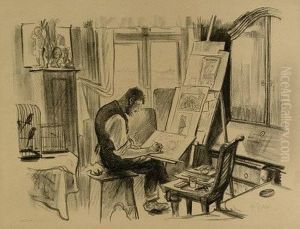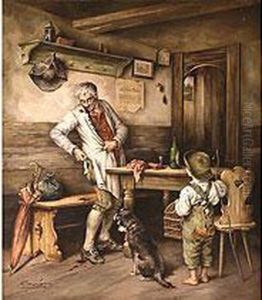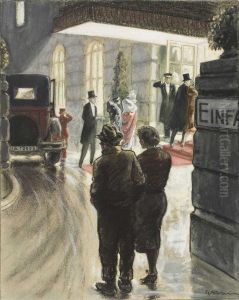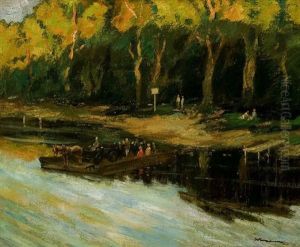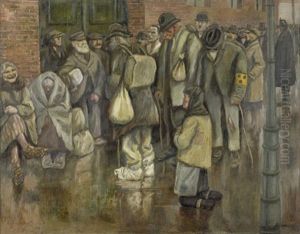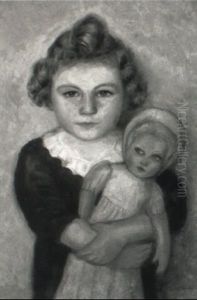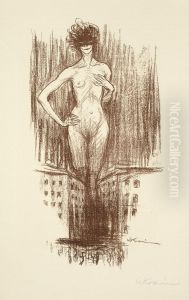Willibald Krain Paintings
Willibald Krain, originally born Willibald Krainsch, was a German artist known for his graphic works, illustrations, and paintings. Born on October 6, 1886, in Berlin, Germany, Krain embarked on a journey in the arts that would see him become one of the notable German illustrators of the early 20th century. His artwork is characterized by a keen observation of social issues and a distinctive use of color and form, which often reflected the turbulent socio-political climate of his times.
Krain's education in art began at a young age, attending the Royal Academy of Arts in Berlin. His style evolved over time, initially influenced by German Expressionism, a movement known for its emphasis on emotional expression over physical reality. Krain's works often depicted the struggles and hardships of the working class, aligning with his empathetic view towards society's underprivileged. This thematic focus was a constant throughout his career, marking his contributions to both art and social commentary.
Throughout his career, Willibald Krain was active in the Berlin art scene, participating in numerous exhibitions and becoming a significant figure among his contemporaries. His illustrations were widely published in magazines and books, expanding his influence beyond the confines of galleries. During World War I, he served in the German army, an experience that further deepened his understanding of human suffering and injustice, themes that became more pronounced in his post-war works.
The rise of the Nazi regime and the onset of World War II marked a challenging period for many artists in Germany, including Krain. His work, which often critiqued society and politics, did not align with the Nazi ideology, leading to a period of professional and personal difficulty. Despite these challenges, Krain continued to produce art that reflected his deep-seated convictions and observations of the world around him.
Willibald Krain passed away on March 29, 1945, in Berlin, just before the end of World War II. Although not as widely recognized today as some of his contemporaries, his contributions to German art and illustration remain significant. His body of work offers a poignant reflection of early 20th-century Europe, capturing the essence of a society in flux through the lens of a deeply empathetic and socially conscious artist.
